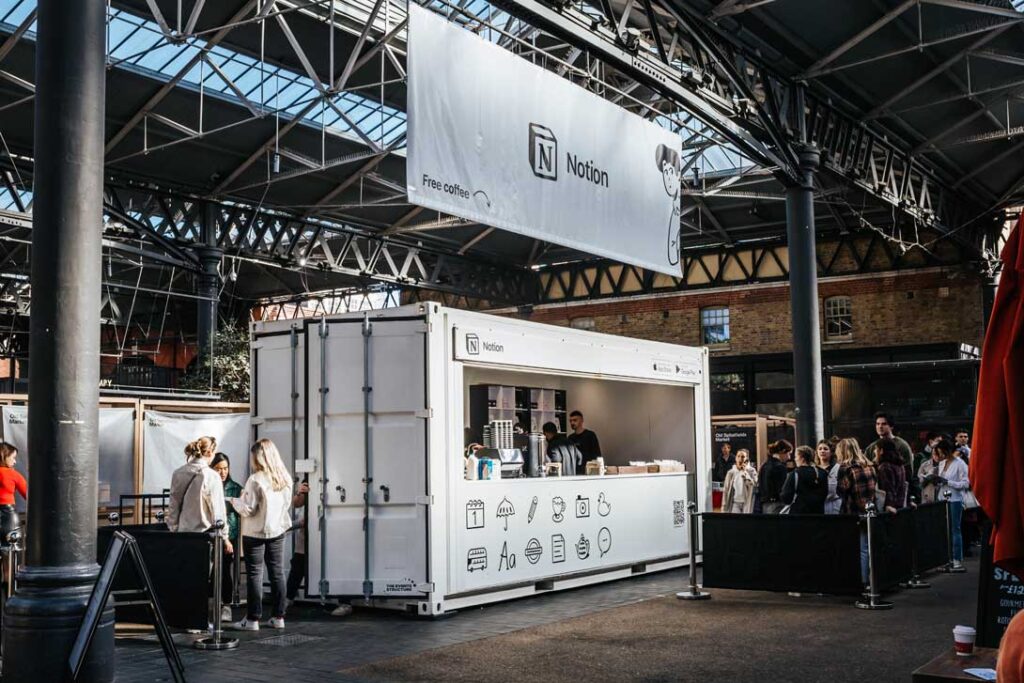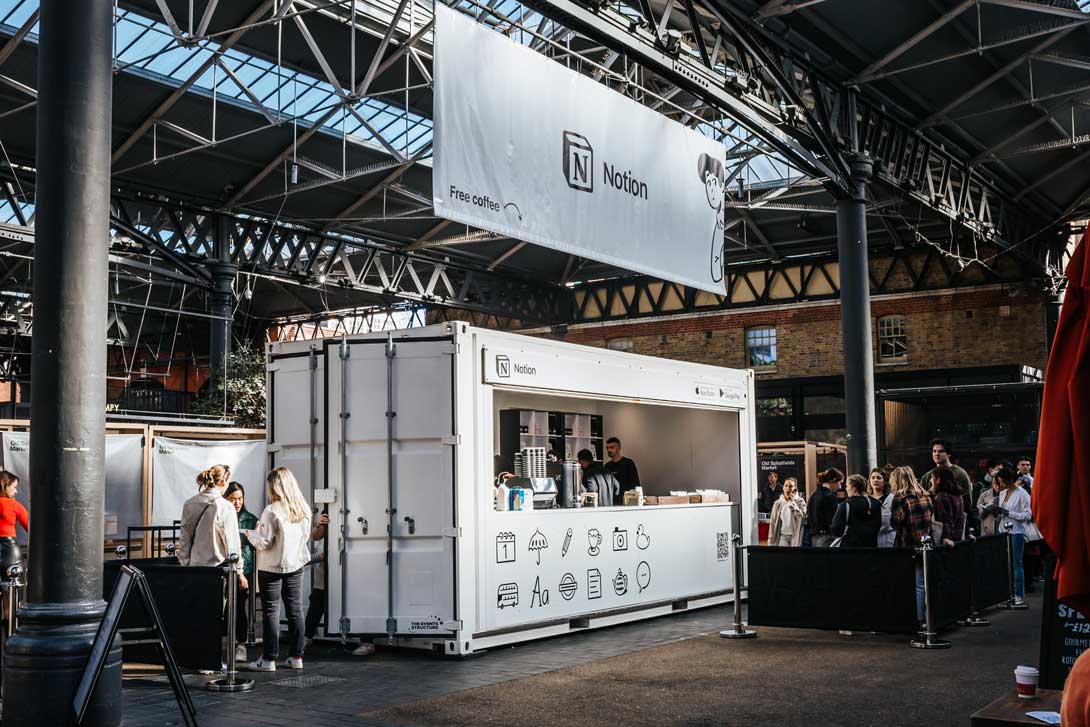Pop-up experiences that last a few days or several months have been around for the last decade, but post-Covid we have seen a huge increase in this form of retail which is in large part driven by the increase in D2C brands looking to explore physical interaction with their audiences.
The key downfall of a D2C brand in the eyes of a consumer is the lack of physical presence where you get the chance to pick up, turn on or try on its products. For most of us being able to ‘try before you buy’ is a key part of the purchase process, especially for highly personal products such as colour matching foundation or high value electronic items.

Non-physical marketing also limits some of the other key interactions D2C brands can have with their consumers, such as creating more impact around a ‘big news moment’, or having a physical platform to engage with your community plus the obvious brand building a physical store environment provides.
Measuring success.
We believe pop-up shops are unique in the wealth and effectiveness of the marketing deliverables they can provide and should not just be seen as a retail space where the success is measured in sales alone – The shop frontage is a mass awareness driving billboard on a busy high street, the brand space is a content creation hub for influencers and your customers, and the product interactions are live 1-2-1 market research sessions.

If you get the experience right then you will find that there is no better and quicker way of building a deep brand affinity and emotional connection with your audience where they are in a mindset to give back, whether that is sharing their experience on social, signing up to emails to find out more or the ultimate goal of converting sales.
Top tips for pop-up success
#1 Exciting creative concept.
Our key tip for success is not location, location, location – In our experience the key driver of success (to deliver strong awareness, footfall, sales, content creation) is the power of the pop up shop creative concept and its ability to excite shoppers to seek you out and also generate column inches. Avoid recreating your standard retail experience but in a more vibrant space with a selfie booth – Pop ups are meant to be temporary environments for brands to have fun with and provide a generous, exciting, and unique experience to shoppers – Pop ups that win and capture audiences’ hearts push creative boundaries and make them an absolute must visit for fans of their product or category.
As an example, the ‘Warehouse of Dreams’ pop up experience we created for D2C brand Beauty Pie in July 2022 played into the brand’s USP of cutting out the middleman and offering premium beauty at ‘warehouse prices’. The experience brought to life their rebellious personality in an immersive premium beauty interpretation of a warehouse – As a result there were daily queues around the block, sales turnover that matched the pop up investment and impressive media coverage.
#2 Pop-up location.
We will admit that location is also an important factor – Know your audience and their shopping habits. A location that is busy in the week with commuters can be dead at the weekends, or in the case of areas like Covent Garden could actually feel like the majority of the footfall are tourists. Also get into the detail of location, being near a main shopping road such as Carnaby St, might seem like a cost-effective option to be close to the action, but in reality, footfalls can decrease by 70% being only one street over. My advice – Once you have some locations in mind, visit them in the days of the week you are planning to activate to understand how these locations will work in reality.
#3 Optimal duration.
Or, more pertinently, when and for how long.
‘When?’– I think we are all feeling the squeeze on our finances at the moment, so aim to activate on, or immediately after the end of the month pay day weekend so shoppers are feeling more ‘flush’ and more likely to purchase.
‘How long?’ – Activating for more than one weekend vastly improves results. We see most brands activate for one long weekend (Fri – Sun) which is likely down to cost reasons and often means most people will only hear about the pop-up after it goes live and when it is too late to plan to attend. Choosing to activate for an extended period vastly improves overall ROI and it only costs around 20% more to activate for a further week. In our experience results show that activating for 10-days from Friday to a week Sunday provides the best ROI as the average results increase daily – It is often twice as busy on the second weekend than the first!
#4 Be generous.
A line I like to quote is that ‘it is only expensive if it doesn’t work’ and consumers expect pop-ups to be an experience that entertains them and that brands give something in return for their time. If shoppers have made the effort to seek you out, then reward them with free samples, exclusive offers, product personalisation as well as fun brand experiences – Be generous and you will be rewarded. Be stingy and you will have wasted an opportunity!
In 2022 we created the ‘Productivity Pop Up’ for the productivity and organisational webtool D2C brand Notion in Old Spitalfields Market to bring to support their UK media campaign. The shipping container pop-up was a chance for consumers and their highly engaged community to meet and interact with the brand, learn about the magic of the platform, and be introduced to specialist functions within the software. Visitors to the experience received a free productivity boosting Coffee, matcha cronut plus share a photo to receive a bum bag to ensure your personal items as well as your life are perfectly organised – As a result of the generosity of the brand the activation engaged with 2,500 guests daily.
The future of pop ups.
Pop ups are definitely here to stay, and we are constantly being asked how we can innovate and create more impactful experiences. Without giving too many trade secrets away, I would say that being able to find a unique location that offers something new in terms of proximity to shoppers or fantastic layouts to house experiences excites us. Also, brand partnerships or services such as F&B that can increase the value of the experience to consumers and generate more noise around the brand – The future of pop ups especially for D2C brands is looking extremely bright and I feel we have only touched on the potential of this growing marketing format.






